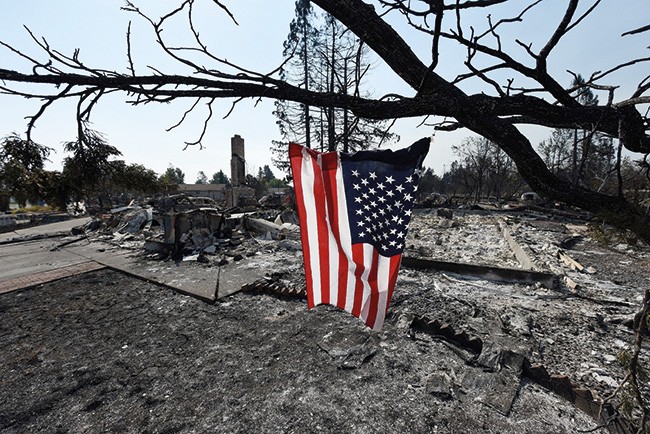October’s wildfires along California’s North Coast caused the deaths of 40 people, the destruction of thousands of homes and businesses while leaving its world famous landscape and vineyards scarred.

Affected were eastern Napa/western Solano County with the Atlas Fire, the west side of Napa Valley and the east side of Sonoma and Santa Rosa towns from the Nuns Fire, and west of the towns of Calistoga and north of Santa Rosa devastated by the Tubbs fire.

Noted viticultural and winemaking consultant Aaron Pott, also proprietor with his wife Claire of their Mount Veeder-based Pott Wine brand, got quite a scare. “The Stagecoach vineyard was burned all around but made it out undamaged for the most part,” he confirmed of one of his consultancies. “We have everything in. I had two vineyards that remained unpicked after the fire but were unaffected by the smoke.”
Maria Helm Sinskey of Robert Sinskey Vineyards in Carneros experienced a bit more trauma as the vineyard surrounding her and husband Robert’s winery was 80% burned. “We lost a house on the property adjacent to us and all the outdoor buildings, but other than that the winery building sustained only minor damage.” Sinskey considers herself very lucky especially as all her staff and their houses were unaffected.
In spite of the widespread damages weathered, reports of wine industry losses in the Napa Valley do not appear to be as protracted as originally expected. With 330 of its member wineries responding to its queries, the Napa Valley Vintners Association reports that direct damage from the fire-induced losses was reported by 47 with a few experiencing significant property loss; fires burned primarily in the forested hillsides leaving the well-traversed Napa Valley floor between Highway 29 and the Silverado Trail with little to no impact from the fires.

Complicating matters, the fires occurred at the end of northern California’s grape harvest season with an estimated 90 percent of the grapes picked before the destruction commenced on October 8. Grapes remaining on the vine when the fires began were relegated predominantly with reds, and in Napa Valley and Sonoma County that means mostly prized Cabernet Sauvignon. Despite the threat of potential hazard to workers from the active fires and to the grapes from smoke taint, wineries that could safely access their vineyards continued their harvest on schedule. The circumstances surrounding these fires and the subsequent effect upon grapes left on the vine were unprecedented with the potential effects of the fires not yet fully known. Vintners have diligently inspected grapes harvested during this period and initiated laboratory tests to ascertain the level of smoke in juice and finished wines.
Because of this and the drought preceding it, the volume of California’s 2017 vintage is expected to be lower than is typical with anecdotal estimates projecting shortages to be comparable to other years that’ve been affected by comparable common irregularities of farming.